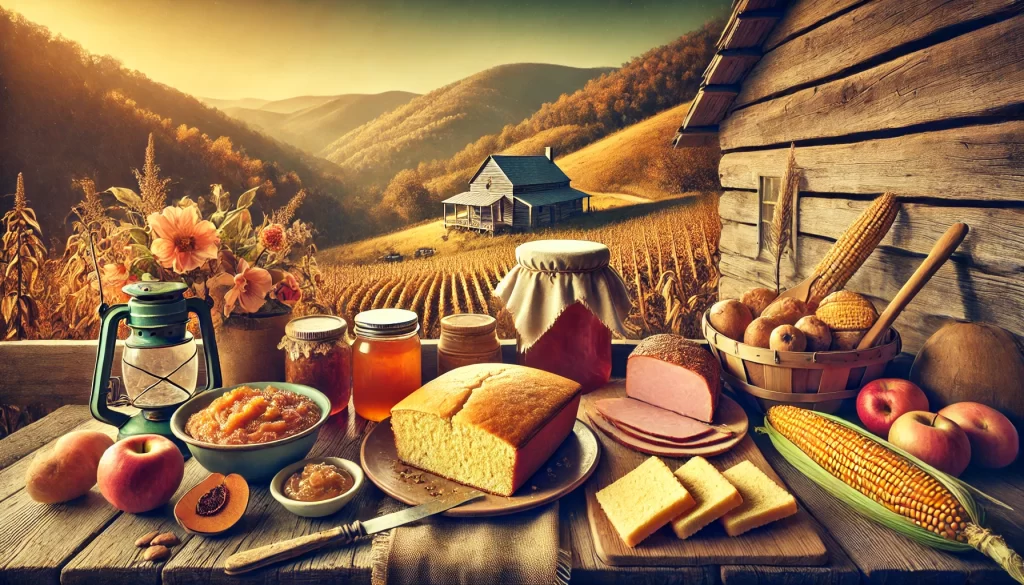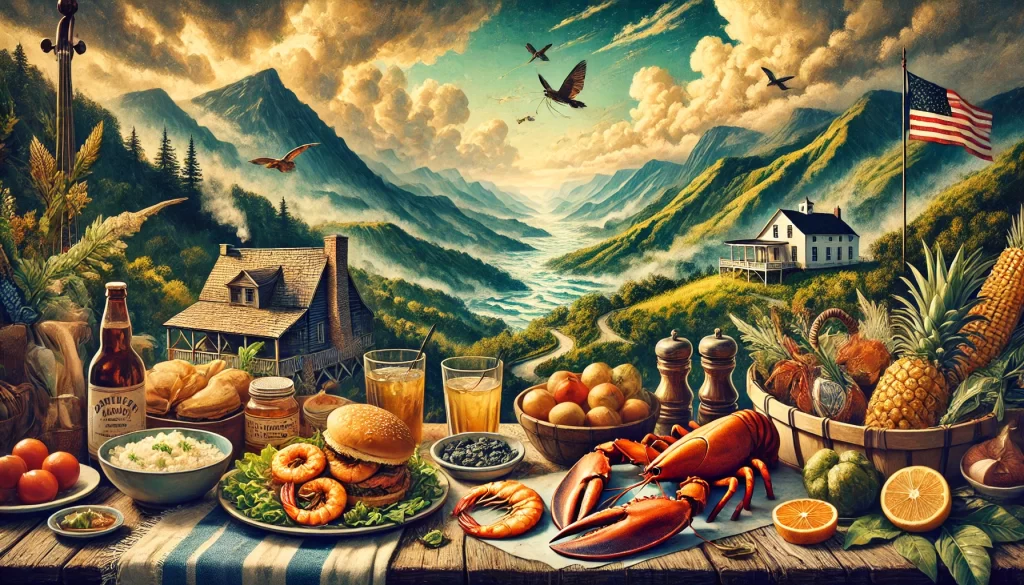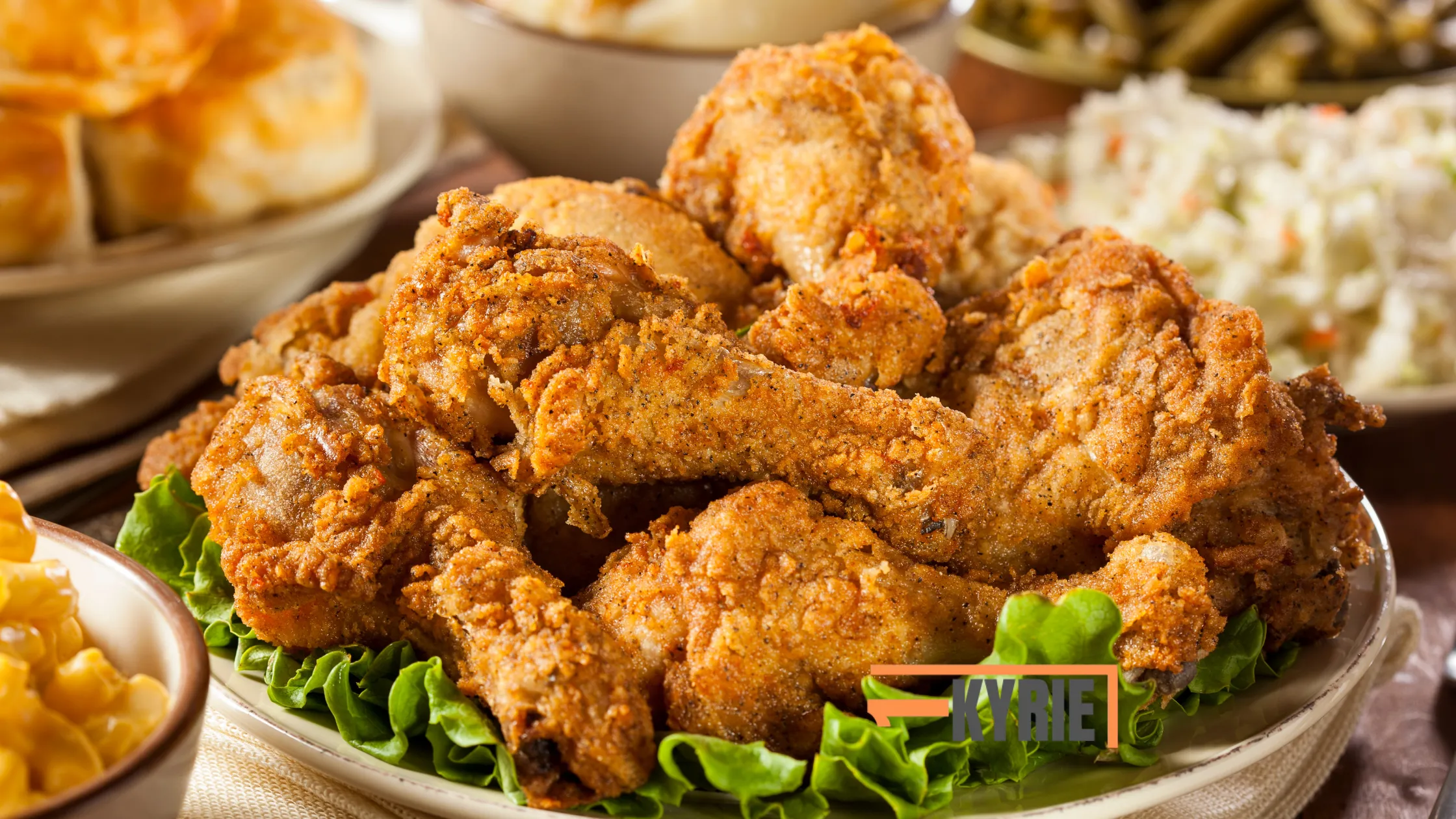Table of Contents
Southern food is more than just a collection of recipes; it reflects the geography and culture of the American South. From the rolling hills of the Appalachians to the vast coastal plains, the geography of the South has played a significant role in shaping its unique culinary traditions. This article explores how geography and Southern food are intertwined, creating a rich tapestry of flavors that tell the story of the region’s history, culture, and people. By understanding the connection between geography and Southern food, we can better appreciate the diverse and delicious cuisine that defines this region.
The Influence of Geography on Southern Food

The Diverse Landscapes of the South
The Southern United States is a region of varied landscapes, each contributing to the rich diversity of Southern food. The mountains, rivers, forests, and coastlines offer different resources that have influenced the dishes we know and love today. The rugged terrain and cool climate are perfect for growing root vegetables and raising livestock, leading to hearty dishes like cornbread and country ham in the Appalachian Mountains. On the other hand, the fertile soil of the Mississippi Delta is ideal for growing rice, which has become a staple in Southern cuisine, particularly in dishes like jambalaya and gumbo. Here, the geography and Southern food connection highlights how the land shapes what ends on the plate.
Coastal Influence on Southern Cuisine
The South’s proximity to the Atlantic Ocean and the Gulf of Mexico has profoundly impacted its food. Coastal areas are known for their abundant seafood, which has become a cornerstone of Southern cuisine. The sea’s bounty is celebrated in many Southern dishes, from shrimp and grits to crab boils. The coastal geography has also introduced a variety of spices and flavors, thanks to the region’s history as a hub for trade and cultural exchange. This coastal geography and Southern food fusion have created a unique culinary identity that is beloved by many.
The Role of Agriculture in Southern Food
Agriculture has always been vital to the Southern economy, significantly shaping the region’s cuisine. The warm climate and long growing season allow for the cultivation of crops like cotton, tobacco, and food staples such as corn, beans, and sweet potatoes. These crops have formed the backbone of Southern cooking, providing the ingredients for iconic dishes like fried green tomatoes, black-eyed peas, and sweet potato pie. The relationship between geography and Southern food is evident in how the region’s agricultural practices have influenced its culinary traditions.
Cultural Roots of Southern Food

African Influence on Southern Cuisine
The story of Southern food cannot be told without acknowledging the profound influence of African cuisine. Enslaved Africans brought cooking techniques, ingredients, and flavors that have become integral to Southern food. Dishes like gumbo, okra, and collard greens have roots in African culinary traditions, and the use of spices and slow-cooking methods are also a testament to this influence. Blending African culinary traditions with the geography and Southern food has created a rich and diverse culinary heritage.
The Fusion of Native American and European Traditions
Southern cuisine is a melting pot of cultures, blending Native American, European, and African influences. Native Americans introduced ingredients like corn, beans, and squash, which became staples in Southern cooking. European settlers brought their culinary traditions, including baking and frying techniques, adapted to the South’s ingredients. The result is a unique cuisine that reflects the region’s rich cultural heritage and the deep connection between geography and Southern food.
Iconic Southern Dishes and Their Geographic Roots

The Birthplace of Barbecue
Barbecue is perhaps the most iconic of all Southern foods, and its roots can be traced back to the region’s geography. The warm climate and abundant forests of the South provided the perfect conditions for slow-cooking meat over an open fire. Native Americans perfected this technique, which was later adopted by European settlers. Today, barbecue is a beloved tradition in the South, with each region offering its unique style and flavor. The geography and Southern food relationship is seen in the evolution of barbecue across different Southern states.
The Lowcountry’s Signature Dishes
The Lowcountry, a coastal region stretching from South Carolina to Georgia, is known for its rich culinary traditions that reflect its unique geography. The area’s marshes and rivers provide an abundance of seafood, which is featured prominently in dishes like shrimp and grits and she-crab soup. Rice, which thrives in the region’s wet, fertile soil, is another staple ingredient, often paired with seafood to create flavorful one-pot meals. The connection between geography and Southern food is evident in the Lowcountry’s emphasis on fresh, local ingredients.
Appalachian Mountain Cuisine
The Appalachian Mountains are home to a cuisine that is as rugged and resourceful as the people who live there. The region’s cool climate and rocky terrain have influenced the development of simple, hearty dishes made with locally sourced ingredients. Cornbread, country ham, and apple butter are just a few examples of the foods that have become synonymous with Appalachian cooking. The geography and Southern food connection in this region highlights how the land shapes the culinary traditions of the people there.
Also Read: What Food Does Crabs Eat? Discover Their Unbelievable Diet
The Evolution of Southern Food
Modern Takes on Traditional Southern Dishes
While Southern food is deeply rooted in tradition, it constantly evolves. Chefs across the South are reimagining classic dishes, incorporating new ingredients and techniques while staying true to Southern cuisine’s flavors and traditions. This blending of old and new has resulted in a vibrant culinary scene that honors the past while embracing the future. The geography and Southern food connection continues to influence these modern takes, as chefs draw inspiration from the land and its resources.
The Role of Geography in the Future of Southern Food
As the South continues to grow and change, so will its cuisine. The region’s geography will continue to play a crucial role in shaping the food of the future, whether through the development of new agricultural practices or the exploration of the region’s diverse landscapes. However, the deep connection between geography and Southern food remains constant, which will continue to influence how we eat for generations to come.
The relationship between geography and Southern food is one of deep and enduring significance. The diverse landscapes of the South have given rise to a cuisine that is as varied and rich as the region itself. From the coastal seafood dishes to the hearty mountain fare, Southern food tells the story of the land and the people who call it home. As we savor the flavors of the South, we are reminded of the rich roots that have shaped this beloved cuisine. Whether it’s a barbecue plate or a bowl of shrimp and grits, each bite is a testament to the enduring connection between geography and Southern food.

